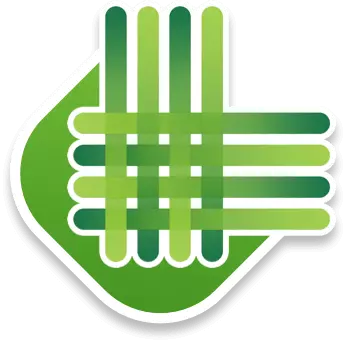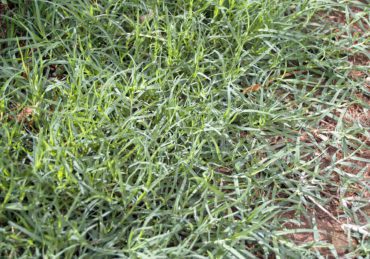In 2025, installing artificial grass will set you back between $6,250 and $12,500, translating to about $7 to $18 per square foot. The cost depends on the type of turf, with options like polyethylene, nylon, and polypropylene varying in price, and your location greatly impacting labor charges. For instance, areas like New York and Boston may see rates as high as $23 per square foot, while places like Gilbert, AZ, could be more affordable. Additional expenses such as removing existing grass and complex landscaping can also affect the total. Curious about specific factors that influence cost? There’s more to uncover.
Average Artificial Grass Costs in 2025
Curious about the average costs of installing artificial grass in 2025? You’re looking at a range of $6,250 to $12,500. This boils down to approximately $7 to $18 per square foot. These artificial grass costs are influenced by both material costs and labor costs.
When it comes to material costs, you’ve got options. Polyethylene turf, a popular choice, ranges between $2.20 and $4.10 per square foot. If you prefer something more durable, nylon turf can cost up to $6.40 per square foot. These costs can quickly add up, especially for larger areas.
Labor costs are another significant factor in your budget. Professional installation fees vary widely, from $3.45 to $12 per square foot. While hiring professionals guarantees quality and efficiency, it can substantially increase the overall cost. On the other hand, opting for a DIY approach could save you anywhere from $1,725 to $6,000, though it requires time and effort.
Cost of Artificial Grass by Type
When you’re considering artificial grass, you’ll find that costs vary greatly between types like polyethylene, nylon, and polypropylene.
Each type has its own price range and benefits, which can impact your overall investment and long-term maintenance.
Let’s break down how these costs differ and what you can expect to pay for specialty turfs like pet and sports turf.
Polyethylene vs. Nylon vs. Polypropylene Turf Costs
Choosing between polyethylene, nylon, and polypropylene turf involves balancing cost with durability and purpose.
Polyethylene turf is the most affordable, costing between $2.20 and $4.10 per square foot. It’s versatile and suitable for various applications like pet areas and playgrounds. If you’re looking for an entry-level option that still offers decent durability, polyethylene might be your best bet.
Nylon turf, on the other hand, comes with a higher price tag, ranging from $5 to $6.40 per square foot. It’s known for its exceptional durability and longevity, making it ideal for high-traffic areas such as sports fields. While the initial artificial grass cost for nylon is higher, its resilience can make it a worthwhile investment for spaces that see a lot of activity.
Polypropylene turf is priced between $2 and $6.35 per square foot. It offers a softer feel but is less durable, making it best suited for low-traffic, decorative areas.
Type of Artificial Turf Materials (Pet Turf, Sports Turf)
Specialty turf options like pet turf and sports turf come with unique features and costs tailored to their specific uses.
Pet turf typically costs between $2.20 and $6.40 per square foot, thanks to added features like antimicrobial properties and dual drainage systems to handle waste. You’ll also need to factor in infill costs, which can add an extra $0.30 to $1.75 per pound, designed specifically to control odors and enhance comfort for your furry friends.
Sports turf installations are a bit pricier, ranging from $5 to $12 per square foot, depending on the type of sport and the level of durability required for high foot traffic. High-quality nylon sports turf, known for its resilience in competitive play, costs between $5 and $6.40 per square foot.
While the initial costs for specialty turf might seem high, the long-term benefits like minimal maintenance and lower water bills make them a cost-effective choice.
Always consider the specific needs of your application to choose the right turf type and budget accordingly.
Artificial Grass Installation Cost by Location
Wondering how much artificial grass installation will set you back in different parts of the U.S.? Let’s explore a pricing guide to give you a clearer picture.
The cost per square foot for artificial grass installation can vary greatly based on location. In bustling cities like New York, NY, and Boston, MA, you’re looking at costs ranging from $17 to $23 per square foot.
Meanwhile, in the Southeast, cities such as Atlanta, GA, and Knoxville, TN, offer slightly lower rates between $14 and $17 per square foot.
Heading to the Midwest, Chicago, IL, has artificial turf installation prices from $14 to $20 per square foot, while South Bend, IN, is a bit more consistent at $16 to $18 per square foot.
Over in the Northwest, Seattle, WA, ranges from $14 to $21 per square foot, and Beaverton, OR, sits between $16 and $18 per square foot.
In the Southwest, you’ll find San Diego, CA, offering installation costs from $14 to $18 per square foot, and Gilbert, AZ, is more budget-friendly with prices between $12 and $15 per square foot.
These regional differences can help you plan your installation costs more accurately.
Professional Installation vs. DIY Installation Cost
When considering artificial grass installation, you’ll need to weigh the costs of hiring professionals versus doing it yourself.
While professionals guarantee efficiency and expertise, DIY projects can save you significant money upfront.
However, be prepared for potential challenges that might arise, impacting both time and overall expenses.
Cost Breakdown for Professional Installation
Comparing professional installation to DIY installation reveals significant differences in cost, time investment, and potential risks.
For professionals, you’ll typically pay between $5 and $20 per square foot, which includes both materials and labor. This thorough service covers everything from removing your old lawn to laying the new turf, ensuring a flawless finish. Professional installation offers the convenience of skilled labor and a guaranteed result, but it comes at a premium. Labor costs alone range from $3.45 to $12 per square foot, depending on your location and the complexity of the job. For instance, installing artificial grass on curved or sloped surfaces can increase the cost by 15% to 60% compared to flat areas.
On the other hand, DIY installations primarily involve turf costs and the price of materials, but you’ll save on labor expenses. While DIY installation might seem cheaper upfront, the grass installation costs could escalate due to potential errors and the substantial time commitment required.
Opting for professionals minimizes these risks and saves you the hassle, although it’s more expensive. When deciding between professional installation and DIY, consider your budget, time, and confidence in handling the project.
DIY Installation Cost Savings and Challenges
Choosing DIY installation for artificial grass can save you a significant amount of money, but it comes with its own set of challenges. By opting for a DIY installation, you could save between $1,725 to $6,000 compared to hiring professionals, depending on your lawn size and the materials you choose. The average DIY cost for polypropylene turf is about $7.65 per square foot, whereas professional installation ranges from $3.45 to $12 per square foot.
However, it’s important to weigh the cost savings against the potential challenges. DIY installation requires a considerable time investment, possibly taking days or even weeks to complete, while professionals can finish the job in as little as one day to a week. Mistakes made during a DIY project can lead to uneven surfaces and additional repair costs, potentially negating any initial savings.
On the other hand, professional installation offers several advantages. Professionals use best techniques, have access to high-quality materials, and often provide warranties. These benefits can guarantee a smoother, more durable finish for your artificial grass.
Ultimately, while DIY installation offers cost savings, it comes with risks and time commitments that you need to carefully consider.
Additional Costs to Install Artificial Grass
When planning your artificial grass installation, don’t forget the additional costs for vital materials.
You’ll need base materials like road base and weed barrier fabric, as well as infill and seam tape to guarantee a proper fit.
These components can considerably impact your overall budget, so it’s important to account for them from the start.
Base Materials (Road Base, Weed Barrier Fabric)
You should budget for base materials like Class II road base and weed barrier fabric, as they greatly affect the overall cost of installing artificial grass.
The road base, vital for providing stability, typically costs between $0.25 and $0.75 per pound. This cost can add up quickly, especially for larger areas. For instance, a 1,000 square foot installation might require between $250 and $750 just for the road base, depending on local pricing and specific needs.
Weed barrier fabric is another important component, preventing weed growth beneath your artificial grass. Its cost ranges from $0.10 to $0.80 per square foot. Though it might seem like a small expense, it can greatly influence your total cost. For a 1,000 square foot area, you’re looking at an additional $100 to $800. Investing in quality weed barrier fabric can save you from future maintenance costs, making it a wise choice in the long run.
When planning your artificial grass installation, considering these material costs is vital. They’re not just add-ons but integral parts of achieving a durable and low-maintenance lawn. Ignoring these can lead to unexpected expenses, affecting your total cost.
Infill, Seam Tape, and Other Materials
Infill materials, seam tape, and other essential items can greatly impact the overall cost of installing artificial grass. For instance, infill typically costs between $0.30 and $1.70 per pound, and you’ll need about 1-2 pounds per square foot.
Seam tape, necessary for joining sections of turf, ranges from $0.50 to $1.50 per linear foot, influencing the overall cost based on your area’s size and layout.
Weed barrier fabric is another critical component that helps prevent unwanted plant growth beneath your artificial grass. Depending on the quality, this fabric can cost between $0.10 and $0.80 per square foot. It’s an investment that can save you time and hassle in the long run.
Beyond these, other artificial grass materials like glue and nails are also needed for proper installation. These additional items contribute to the overall cost, often pushing the total material expenses for a typical project to range from $2,725 to $10,000.
Factoring in these costs will give you a more accurate picture of your financial commitment when installing artificial grass.
Cost to Install Artificial Turf on Sloped or Curved Land
Installing artificial grass on sloped or curved land often comes with added costs due to the increased complexity and need for specialized materials. The cost to install artificial grass on sloped land typically sees a 50% to 60% increase compared to flat areas. This is because the installation not only requires more labor but also additional base materials and drainage solutions to guarantee proper stability and water management.
For curved areas, expect a cost increase of about 15% to 20%. The precise cutting and fitting needed for these shapes demand more time and expertise, driving up the installation costs. On average, labor costs for sloped or curved installations range from $3.45 to $12 per square foot, reflecting the project’s complexity.
Additionally, incorporating proper drainage solutions is essential to prevent issues like water pooling or erosion, especially on sloped terrains. This often necessitates professional planning and execution to achieve a level surface and long-lasting results.
While these added costs might seem significant initially, they secure a durable and visually appealing artificial lawn that can withstand various environmental challenges.
Cost to Remove the Real Grass or Landscaping
Removing existing grass or landscaping can greatly impact the overall cost of an artificial grass installation. The cost to remove existing grass typically ranges from $0.88 to $1.84 per square foot, depending on the method used. If you opt for professional grass removal services, expect to pay between $1.05 and $1.95 per square foot. These services include labor and disposal fees, which can add up quickly, especially for larger areas.
If you’re considering a more cost-effective approach, DIY grass removal might be the way to go. While it can save you on labor costs, remember that you’ll need to purchase or rent tools and equipment, which can set you back an additional $100 to $300.
Landscaping features such as trees or shrubs can complicate the process and increase the overall cost. Removing these elements often requires specialized equipment and additional labor, driving up expenses.
Additionally, the condition and accessibility of your existing lawn play a significant role in determining labor costs. Challenging removal conditions may require more intensive labor, leading to higher costs.
Ultimately, whether you choose professional services or a DIY approach, it’s essential to factor in these expenses when calculating the total cost of your artificial grass installation.
Cost to Install Landscape Edging with Artificial Grass
When planning your artificial grass installation, don’t overlook the cost of landscape edging, which typically ranges from $2 to $11.50 per linear foot.
Landscape edging is essential when you install artificial grass as it defines the space and provides a clean changeover between the turf and other elements like flower beds or walkways.
The landscape edging cost varies depending on the material and design you choose. Simple plastic or metal edging might be on the lower end, while more elaborate stone or brick options will be pricier. Factor in the length of edging required, which depends on the shape and size of your landscaped area.
Properly installed landscape edging helps maintain the integrity of your artificial turf installation by preventing grass infill from spilling into unwanted areas. It also enhances the overall aesthetic, giving your yard a polished look.
While DIY methods can save some money, professional installation guarantees durability and a visually pleasing result.
Incorporating the cost of landscape edging into your budget for getting artificial grass installed will give you a clearer picture of the total expenses involved. This attention to detail can make a significant difference in the longevity and appearance of your artificial turf installation.
Cost of Maintaining Artificial Grass
Maintaining artificial grass annually typically costs between $250 and $350, covering essential cleaning and upkeep tasks. These maintenance costs are considerably lower than those for natural grass, but you’ll still need to commit to regular upkeep to keep your artificial turf looking pristine.
First, plan for regular cleaning. Removing pet waste and debris is vital. Leaf removal, which can cost between $155 and $460 per season, guarantees your lawn remains free of clutter. You’ll also need to brush the turf occasionally to maintain its appearance and prevent matting. This simple step goes a long way in preserving the look and feel of your artificial grass.
Additionally, every few years, you might need to replenish the infill, which can add to the maintenance costs. Fortunately, the cleaning supplies required for routine maintenance, such as a hose and dish soap, are minimal in expense. These basic tools help you manage the upkeep without breaking the bank.
While artificial grass boasts low maintenance compared to natural grass, neglecting it can lead to issues like odor buildup and decreased longevity. By staying on top of your annual maintenance, you guarantee your investment remains in top condition for years to come.
FAQ About Artificial Grass Costs
How to Estimate Artificial Grass?
To estimate artificial grass, measure the area’s square footage and multiply by the cost per square foot, considering materials and labor. Factor in site prep costs like grass removal and edging for a thorough estimate.
Is Artificial Grass Worth the Money?
Yes, artificial grass is worth the money. You’ll save on water, lawn care, and maintenance costs. Plus, it offers long-term durability and can enhance your property’s value, making it a smart investment.
What Is the Life Expectancy of Artificial Grass?
You can expect high-quality artificial grass to last 15 to 25 years with proper maintenance. Keep it clean and replenish infill regularly to maximize its lifespan. Cheaper options might only last 5 to 10 years.
How Long Does Artificial Grass Typically Last For?
Artificial grass typically lasts between 10 to 20 years, depending on the quality and foot traffic. With proper maintenance, high-quality options can endure even longer. Regular upkeep, like cleaning and infill replenishment, extends its lifespan.




